

The Genesis of Industrial Capital: A Study of West Riding Wool Textile ... - Pat Hudson. Internet History Sourcebooks. Modern History Sourcebook: Letter from Leeds Cloth Merchants, 1791 This statement by the Cloth Merchants of Leeds (a major center of wool manufacture in Yorkshire) defended the use of machines.
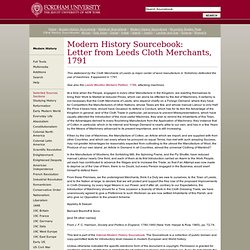
It appeared in 1791. See also the Leeds Woollen Workers Petition, 1786, attacking machines. If then by the Use of Machines, the Manufacture of Cotton, an Article which we import, and are supplied with from other Countries, and which can every where be procured on equal Terms, has met with such amazing Success, may not greater Advantages be reasonably expected from cultivating to the utmost the Manufacture of Wool, the Produce of our own Island, an Article in Demand in all Countries, almost the universal Clothing of Mankind?
Appleby & Sawyer Bernard Bischoff & Sons [and 59 other names] From J. This text is part of the Internet Modern History Sourcebook. Unless otherwise indicated the specific electronic form of the document is copyright. (c)Paul Halsall Aug 1997 halsall@murray.fordham.edu. Woollen industry. History of the woollen Industry At first worsted spinning frames were introduced into the cottages and for a while the operators had a monopoly.
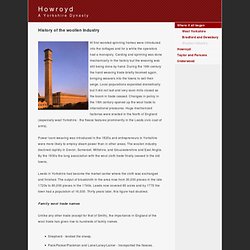
Carding and spinning was done mechanically in the factory but the weaving was still being done by hand. During the 19th century the hand weaving trade briefly boomed again, bringing weavers into the towns to sell their serge. Local populations expanded dramatically but it did not last and very soon mills closed as the boom in trade ceased. Changes in policy in the 19th century opened up the wool trade to international pressures. Power loom weaving was introduced in the 1820s and entrepreneurs in Yorkshire were more likely to employ steam power than in other areas. Leeds in Yorkshire had become the market center where the cloth was exchanged and finished. Family wool trade names Unlike any other trade (except for that of Smith), the importance in England of the wool trade has given rise to hundreds of family names. Wool. `Sheep have eaten up our meadows and our downs, Our corn, our wood, whole villages and towns.' ...wrote a poet at the time.
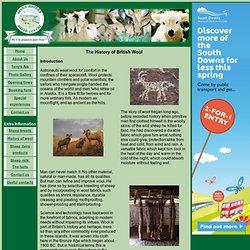
Despite setbacks, raw wool exporting expanded, and so also did manufacturing of wool fabrics. This was becoming both specialized and localized. The West Country had three advantages-extensive sheep pastures, a supply of soft water for washing, scouring and dyeing, and water-power to drive milling machinery. Similarly, the Pennine districts of Yorkshire and Lancashire had soft water, and water power from steeply graded streams. In East Anglia there was soft water but no hills or fast-running streams to provide power for `fulling' mills.
Cloth from English looms quickly achieved an international reputation. Woolen Industry in England</head> Photo of the tenterhooks at Otterburn Mill in Northumberland, courtesy of Lesley Abernethy December 2011 Finishing Print collection of Maggie Land Blanck Next the cloth was "dressed" and "finished".
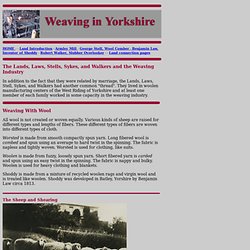
The dressing involved drawing out any loose fibers from the cloth with teasles which also raised the nap. The men on the right in the above images (called "the working of wool") are "dressing" the cloth. Internet History Sourcebooks. Modern History Sourcebook: Leeds Woollen Workers Petition, 1786 This petition by workers in Leeds (a major center of wool manufacture in Yorkshire) appeared in a local newspapers in 1786.
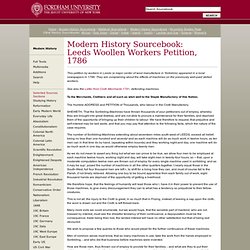
They are complaining about the effects of machines on the previously well-paid skilled workers. See also the Letter from Cloth Merchants 1791, defending machines. To the Merchants, Clothiers and all such as wish well to the Staple Manufactory of this Nation. The Humble ADDRESS and PETITION of Thousands, who labour in the Cloth Manufactory.